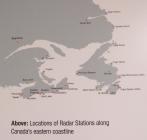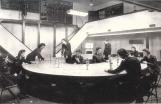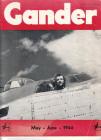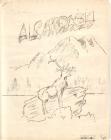1
One of the most overlooked stories of World War II radar is the work of thousands of men and women on the coastal radar stations built right here in Canada. In the early 1940s, there was a growing fear that Canada's coastlines were vulnerable to enemy attack - from the Germans in the East, and the Japanese in the West. Thousands of RCAF personnel helped to operate radar stations in the Canadian coastal provinces and Newfoundland (which was not yet a province of Canada). There were twenty-nine stations on the East Coast and eleven stations on the West Coast which reported to filter rooms on each coast, and linked up with stations in the United States.2
Twenty-nine radar stations were built in the Atlantic provinces, Quebec, Newfoundland and Labrador1941 to 1946
Atlantic Coast, Canada
 Credits:
Credits:The Secrets of Radar Museum
3
RCAF Station at Preston, Nova ScotiaWorld War II
RCAF Preston, Nova Scotia, Canada
 Credits:
Credits:The Secrets of Radar Museum
Bunny Bergstein Collection
4
Inside the barracks at RCAF Preston, Nova Scotia -- neat and tidy!1943 - 1946
RCAF Preston, Nova Scotia, Canada
 Credits:
Credits:The Secrets of Radar Museum
5
RCAF Notebook - Look closely! It's been stamped at the bottom as a confidential RDF Notebook1940-1945
 Credits:
Credits:The Secrets of Radar Museum
6
The Filter Room in St. Johns, Newfoundland kept track of activity on Canada's east coast1942-1945
St. Johns, Newfoundland, Canada
 Credits:
Credits:RCAF Photograph
The Secrets of Radar Museum Archives
7
Trying out the ski hill at Gander, NL, was a welcome adventure on occasional days offFeburary 1944
RCAF Gander, Newfoundland, Canada
 Credits:
Credits:The Secrets of Radar Museum
Simpson Collection
8
A hanger fire in Gander, Nfld shook the RCAF base there in 19444 June 1944
RCAF Gander, Newfoundland, Canada
 Credits:
Credits:The Secrets of Radar Museum
Simpson Collection
9
The station magazine in Gander, NL was slightly more professional, and was printed in New Brunswick!May - June 1944
RCAF Gander, Newfoundland, Canada
 Credits:
Credits:The Secrets of Radar Museum
Simpson Collection
10
The Alcatrash, RCAF Station Marble Island's station magazine1943 to 1946
Marble Island, British Columbia, Canada

11
Chosen for their strategic position rather than for ease of access, the stations were in remote and rugged locations often with extreme weather conditions. Many sites lacked roads and communications, and geographical obstacles of bush, rock and muskeg presented daunting challenges. Most Canadians were not aware of these stations during the war, but the threat to Canada was very real. There were a variety of types of radar available, including early warning radar, ground controlled intercept radar and high-flying early warning radar.12
The most northerly B.C. radar station was located at Langara Island, in the Queen Charlotte Islands1942-1946
Langara Island, British Columbia, Canada
 Credits:
Credits:Private Collection
Courtesy of D. Meltzer
13
Radar stations were located in strategic locations and were often difficult to access.1942-1946
Langara Island, British Columbia, Canada
 Credits:
Credits:Private Collection
Courtesy of D. Meltzer
14
Eleven stations along the British Columbia coast were vigilant against the threat of attackWorld War II
British Columbia, Canada
 Credits:
Credits:The Secrets of Radar Museum